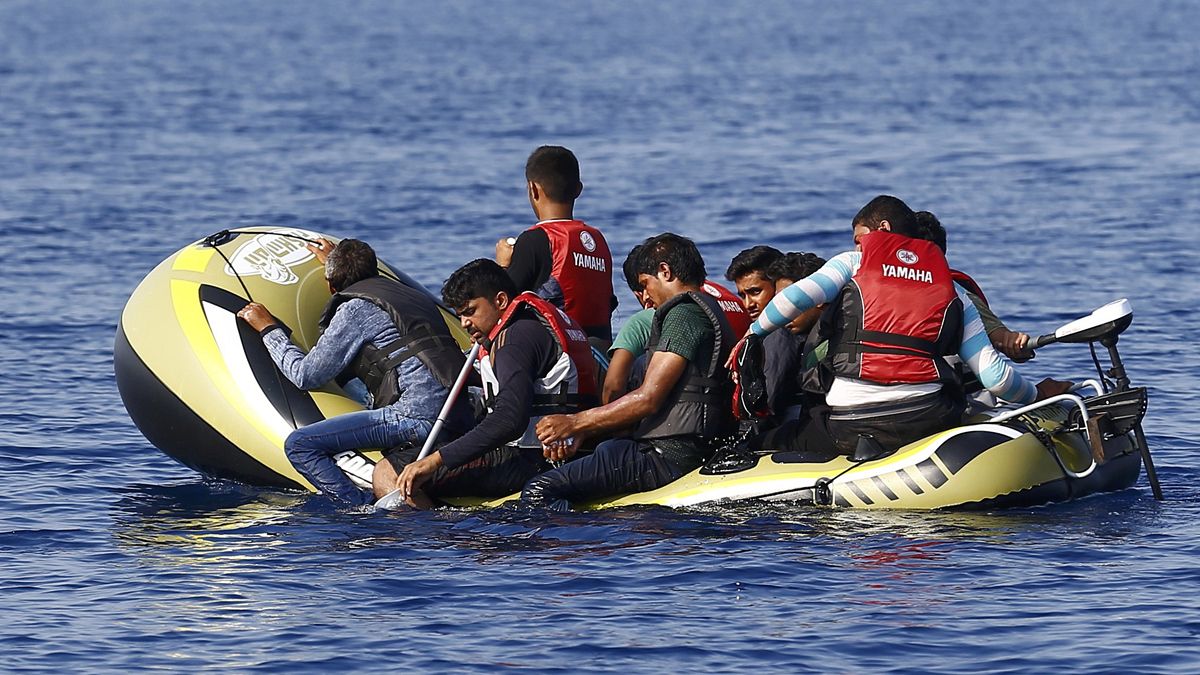“Hotspots are a part of the solution, not the solution itself.” So says Italy’s Prime Minister Matteo Renzi, commenting on one of the European
“Hotspots are a part of the solution, not the solution itself.”
So says Italy’s Prime Minister Matteo Renzi, commenting on one of the European Commission’s big ideas for getting on top of the continent’s worst migration crisis since World War Two.
Bitterly-divided EU leaders will try to come up with a credible response at an emergency summit in Brussels on Wednesday, as hundreds of thousands of refugees and migrants brave the seas and trek through the Balkans to reach richer countries in northern Europe.
So what are Hotspots? Where would they be operational? And, crucially, would they work?
What are Hotspots?
The ‘Hotspot approach’ involves the establishment of EU-run reception centres in frontline member states like Italy and Greece to identify and fingerprint migrants and refugees.
Help to the member states would be provided by the European Asylum Support Office (EASO), the EU border agency (Frontex), the EU Police Cooperation Agency (Europol) and the EU Judicial Cooperation Agency (Eurojust).
Officially-designated Hotspots would be key to the task of relocating refugees from war zones and to filtering out those people who have crossed the Mediterranean in search of better economic circumstances. The ‘Hotspot approach’ would facilitate the return of ‘irregular migrants’.
Where are the Hotspots?
It Italy, four ports have been identified as Hotspots.
These are Pozzallo, Porto Empedocle and Trapani in Sicily and Lampedusa.
In each of these Hotspots, reception facilities are in place able to receive a total of 1,500 people. But given the scale of the influx, further sites are being prepared at Augusta and Taranto. These should be ready by the end of 2015.
The Mediterranean has become the world’s most deadly crossing point for migrants.
Italy has long called for more EU support and a look at the monthly arrivals in the country shows that this problem is nothing new.
According to figures from the United Nations Refugee Agency, the UNHCR, Italy has seen some 128,500 arrivals in 2015.
At 26 percent, Eritreans account for the biggest number, followed by Nigerians (13 percent) and Somalians (8 percent).
BREAKING: Today #DignityI completed 3 separate rescues. The MSF medical team is now providing care to 379 people pic.twitter.com/zndWpbnkuZ
— MSF Sea (@MSF_Sea) 18 Septembre 2015
Italy agrees with the Hotspot approach but insists that does not mean it should shoulder the burden alone.
“Italy is ready for the hotspots, but Europe must redistribute migrants,” said Italian Prime Minister Matteo Renzi.
Italian Interior Minister Angelino Alfano has demanded EU money to pay for repatriating migrants who are not granted asylum.
As for Giusi Nicolini, the Mayor of Lampedusa, where many of the migrants arrive, she says that there Hotspots are nothing new.
“Merkel’s hotspot? It already exists here…We’re going to use the identification centre that has been active for years. But Europe only helps refugees and wants to repatriate those who are fleeing poverty, I think everyone deserves to be helped.”
Most of the refugees who make their way to Europe arrive via Greece, which transports them from its islands to the mainland, from where they trek north via the Balkans. Compared to last year, the figures for new arrivals in Greece have shot up.
The European Commission says that the Hotspot approach in Greece is being modelled on the work carried out so far in Italy, taking into account the multiple locations at which refugees and migrants arrive.
According to figures from the United Nations Refugee Agency, the UNHCR, some 318,489 people have reached Greece by sea in 2015, 70 percent of them from war-torn Syria.
UNHCR tents on #Rhodes and #Chios offer temporary shelter to exhausted @refugeespic.twitter.com/LWCR0OWGwC
— UNHCR Greece (@UNHCRGreece) 22 Septembre 2015
The European Commission says a Hotspot headquarters will be set up at the port of Piraeus near Athens.
Will Hotspots work?
The Hotspot Approach will certainly not solve this massive migration crisis. But it could help manage an increasingly out-of-control situation.
Agreement within the 28-member EU should be easier to find than on relocation, for example, although Hungary and Croatia have said they don’t want to become migrant Hotspots.
The European Commission wants a quota system among EU countries to take in refugees, but many nations, notably Britain and those in eastern Europe, are opposed.
European leaders are also set to discuss longer-term strategies for dealing with the crisis, particularly increasing cooperation with Turkey and the countries bordering Syria to keep the millions of refugees in the region.
European Council President Donald Tusk said on Twitter on Sunday following a weekend visit to Jordan and Egypt that the EU needed to help Syrian refugees find a better life closer to home.
Visit to Za'atari refugee camp in Jordan. We must help Syrian refugees to a better life closer to their homes pic.twitter.com/jyBiBDglgo
— Donald Tusk (@eucopresident) 20 Septembre 2015
Tusk has previously called for Hotspot reception centres to be built close to war zones “outside Europe, where refugee camps already exist”.
